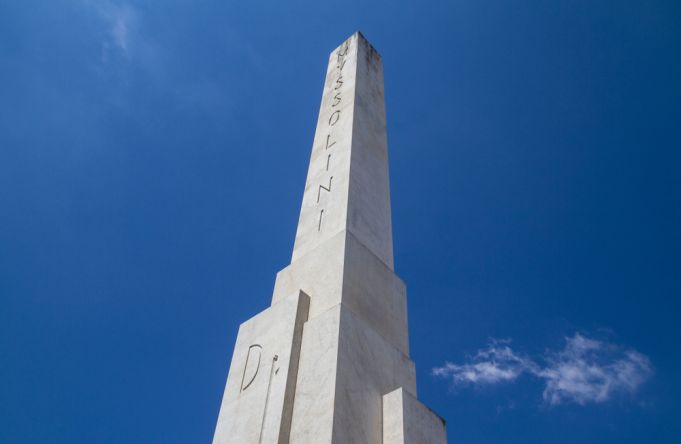Italian capital is full of traces of Mussolini 100 after March on Rome.
An online map charting the existing monuments, buildings and memorials honouring fascism in Italy was launched on Tuesday by the Istituto Ferruccio Parri, an historical research institute in Milan.
The luoghi del fascismo website is hailed as Italy's first nationwide project to document the surviving traces of Benito Mussolini's regime and assess how the memory of fascism has been preserved and even revived in recent decades.
The project includes fascist landmarks such as the Mussolini Dux obelisk near Rome's Olympic Stadium as well as less well-known monuments around in towns and cities around Italy.

Most of the places listed are streets named after figures linked to fascism but the maps also include former fascist party headquarters and buildings once used by the fascist youth organisation Balilla, alongside war memorials and inscriptions with fascist mottos.
The luoghi del fascimo project, co-ordinated by historian Giulia Albanese, offers new historical insights including the geographical distribution of fascist landmarks around Italy.
"The historic streets, especially those that refer to the personalities from the origins of fascism are found more frequently in southern Italy and in the smaller towns", Albanese told Il Post.
Amid a cancel culture debate in Italy, many tourists visiting the Colosseum are surprised to see the name of Benito #Mussolini on a column near the Arch of Constantine. pic.twitter.com/XAqWyUSHnv
— Wanted in Rome (@wantedinrome) October 20, 2022
Scholars have also tried to trace the date of construction of the monument or the naming of the street.
In doing so they were able to observe a clear increase in commemorations since the 1990s, throughout Italy, suggesting a connection with the changing political landscape since that time.
Work began on the project four years ago with the plan to finish most of the research in time for the recent centenary of the march on Rome, on 28 October last.
The Parri institute also conceived the project as ongoing and collaborative, with the public invited to submit landmarks not listed, to be assessed by scholars for possibe inclusion on the website.
Cover image: Palazzo della Civiltà Italiana, EUR, Rome. Photo: ValerioMei / Shutterstock.com.





















